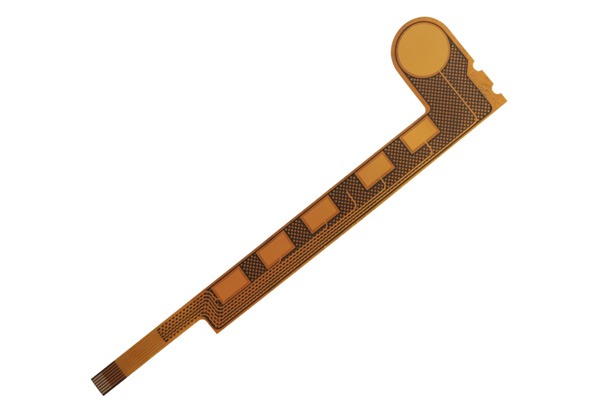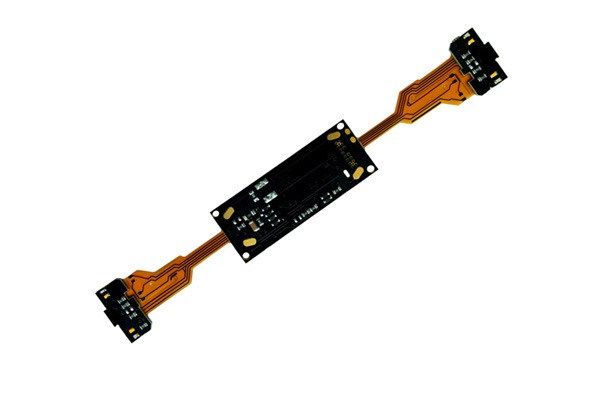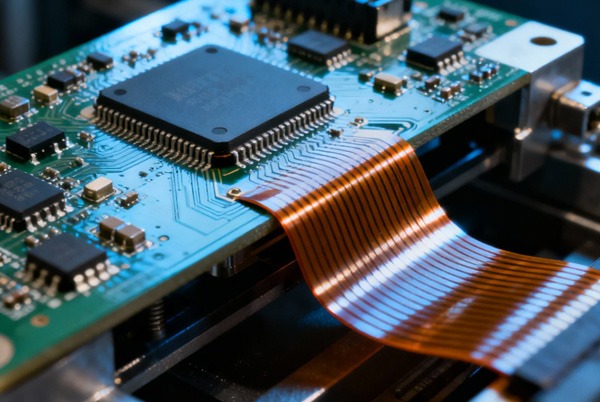In modern electronic engineering, the selection of printed circuit boards (PCBs) directly impacts product performance, reliability, and market competitiveness. Flexible PCBs (FPCs) and rigid-flex boards have become core technologies for numerous innovative products due to their unique physical characteristics.
Table of Contents
Core Advantages of Flexible PCBs
Why Choose Flexible PCBs?
Flexible circuit boards use polyimide (PI) or polyester (PET) films as base materials, offering multiple advantages unmatched by rigid boards:
Three-Dimensional Dynamic Adaptability
- Capable of free bending and folding to adapt to complex spatial layouts, with a minimum bend radius potentially below 1mm.
- Significantly reduces equipment weight (typical thickness is only 0.3mm, over 60% thinner than traditional rigid boards).
- Eliminates the need for connectors, simplifying the assembly process and reducing potential failure points.
Excellent Environmental Tolerance
- Outstanding high-temperature resistance (PI base material can withstand temperatures from -269°C to 400°C).
- Resists vibration and chemical corrosion, suitable for harsh working environments.
- Can endure hundreds of thousands of flex cycles without compromising electrical performance.
High-Density Integration Capability
- Supports fine line widths and micro-via pitches, meeting high-density wiring requirements.
- Excellent signal integrity, particularly suitable for high-frequency applications like 5G millimeter-wave.
Applications of Flexible PCBs
Consumer Electronics Innovation
- Hinge area circuits in foldable smartphones: Enable dynamic folding and highly reliable transmission.
- Internal connections in TWS earbuds: Save space while ensuring audio signal quality.
- Sensor boards in smartwatches: Adapt to curved designs and bend with wrist movement.
Critical Components in Medical Devices
- Imaging modules in endoscopes: Thin and flexible design ensures flexible operation within narrow cavities.
- Wearable health monitors: Conform to body contours for long-term comfortable wear.
- Implantable medical devices: Biocompatible materials ensure safe in-body use.
Industrial and Cutting-Edge Technology
- Gimbal control systems in drones: Reduce weight while resisting flight vibrations.
- Joint wiring in industrial robots: Adapt to multi-axis movement without fatigue fracture.
- Internal connections in AR/VR devices: Enable high-bandwidth data transmission in compact spaces.

The Unique Value of Rigid-Flex Boards
When is a Rigid-Flex Solution Needed?
Rigid-flex boards innovatively integrate flexible areas and rigid areas onto a single board, combining the advantages of both:
Optimized Structure Design
- Rigid areas provide a stable platform for component mounting, supporting high-density packages like BGAs.
- Flexible areas enable three-dimensional interconnections, replacing traditional cable connections.
- The integrated structure reduces the number of connectors, enhancing system reliability.
Balanced Performance Advantages
- Maintains the dynamic characteristics of flexible connections while possessing the structural strength of rigid areas.
- Simplifies the final assembly process, reducing overall system costs.
Core Applications of Rigid-Flex Boards
Automotive Electronic Systems
- Connections between instrument clusters and center consoles: Adapt to complex spatial layouts within vehicles.
- ADAS sensor modules: Withstand vehicle vibration and temperature variations.
- Battery Management Systems (BMS): Achieve stable signal acquisition within limited space.
Aerospace Equipment
- Avionics communication equipment: Lightweight design meets strict aerospace weight requirements.
- Satellite deployment mechanisms: Ensure reliable deployment of solar panels and other structures in space environments.
- Navigation system modules: Maintain stable performance under extreme temperatures.
High-End Industrial Equipment
- Industrial automation controllers: Resist mechanical stress in factory environments.
- Precision test instruments: Achieve complex functional integration within limited space.
- Robot control units: Adapt to wiring requirements for multi-joint articulation.
How should one choose between rigid, flexible, and rigid-flex designs?
Analysis of Key Decision Factors
Spatial and Mechanical Constraints
- Choose Flexible PCBs when:
- Internal device space is highly constrained.
- There is a need for dynamic bending or continuous motion.
- Overall weight reduction is critical.
- The product has a non-planar form factor.
- Choose Rigid PCBs when:
- Mounting space is sufficient with no movement requirements.
- Cost is extremely sensitive for high-volume production.
- High mechanical strength is needed to support heavy components.
- Choose Rigid-Flex Boards when:
- The system requires both static mounting and dynamic connection areas.
- Reducing connector count is necessary to enhance reliability.
- Design complexity is high, and traditional solutions are inadequate.
Performance and Environmental Requirements
- High-Frequency Signal Transmission: Flexible PCBs offer stable dielectric constants, suitable for high-frequency applications.
- Extreme Temperature Environments: PI-based flexible boards perform excellently in high-temperature settings.
- High-Vibration Scenarios: Flexible materials effectively absorb mechanical stress.
- High Heat Dissipation Needs: Rigid boards generally have better thermal dissipation capabilities.
Economic Considerations
- Development Cost (NRE): Flexible and rigid-flex boards typically have higher NRE costs.
- Mass Production Cost: Rigid boards have a clear cost advantage in high-volume production.
- Total System Cost: Consider the comprehensive cost impact of assembly, maintenance, and reliability.
Reference Case Studies for Selection
Case Study 1: Smart Wearable Device
- Requirements: Thin, lightweight, bendable, resistant to daily impact.
- Solution: Single-layer flexible PCB as the main board, supplemented with small rigid stiffener areas.
- Result: Achieved comfortable wearing experience, passed 100,000 bend cycle tests.
Case Study 2: Industrial Robot Controller
- Requirements: Multi-module connection, resistance to continuous vibration, high reliability.
- Solution: 6-layer rigid-flex board, with main chips mounted on rigid areas and flexible areas connecting various sensors.
- Result: Reduced connector usage by 30%, lowered failure rate by 45%.
Case Study 3: Home Appliance Control Board
- Requirements: Cost-sensitive, no movement needed, standard mounting.
- Solution: Double-sided rigid PCB.
- Result: Met functional requirements while effectively controlling costs.

Future Trends and Design Recommendations
As electronic products evolve towards thinner, lighter, and more intelligent designs, the application of flexible PCBs and rigid-flex boards will continue to expand. Demand is growing significantly in areas like IoT devices, wearable technology, automotive electronics, and medical innovations.
Design Recommendations
- Consider PCB type selection during the conceptual phase to avoid late-stage design changes.
- Collaborate early with experienced PCB suppliers to optimize material selection and stack-up design.
- Fully consider manufacturing process capabilities; flexible boards require higher processing precision.
- Conduct thorough reliability testing, especially for dynamic bending application scenarios.
Technology Development Outlook
- New Material Development: Flexible substrates with higher temperature resistance and lower loss.
- Process Advancement: Finer line widths, higher layer counts in rigid-flex boards.
- Integration Innovation: Fusion of new technologies like embedded components and 3D printing.
Conclusion
Selecting the appropriate PCB type is a critical factor in the success of electronic products. Flexible PCBs and rigid-flex boards offer effective solutions for addressing space constraints, dynamic motion, and reliability challenges. As technology advances, these specialized PCBs will continue to drive electronic innovation, enabling smaller, smarter, and more reliable products.
